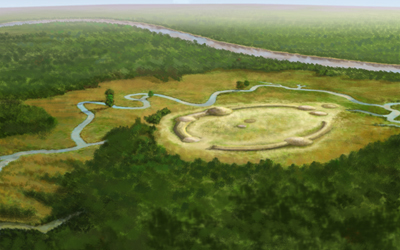S4 E8 Poverty Point
3500 years ago, Poverty Point was a thriving city of over 5000 people in the bayous of northern Louisiana. Despite not having agriculture or even ceramics, those people built North America’s 2nd largest pyramid-mound.
Show Notes:




3500 years ago, Poverty Point was a thriving city of over 5000 people in the bayous of northern Louisiana. Despite not having agriculture or even ceramics, those people built North America’s 2nd largest pyramid-mound.
Show Notes:




I continue to be challenged to think about the difference between primal and primitive by your presentations. These early civilizations were motivated as we are, with different tools and apprehensions but very similar challenges.
The Poverty Point settlement looks like a winter resort for semi-nomadic people escaping the frigid climate up north. That could be why there is no industry or export, just as we see in “snow-bird” villages today. I could imagine that this area was flooded periodically, requiring that the vacation houses be elevated. Perhaps fish were even trapped in the semicircular canals or edible vegetation was grown in the silt laden ditches.
Well, speculation is easy. Looking forward to more evidence from the scientists.
Hello Bruce,
This is a brilliant suggestion! It fits the evidence very well. Yes – ancient snowbirds! Now the trick would be creating a methodology to test your hypothesis. Any equally good ideas on that? If we only had skeletons we could do strontium studies on their teeth to see where they grew up. But like the Olmec, lack of skeletons is part of their mysterious nature.
On our drive (Sunday after Thanksgiving so we had time), back to Arkansas through Ohio, my husband and I listened to you podcast on the Hopewell and the great courses recordings. You made our visit to the mound sites far more interesting. We have also visited Spiro which is near to our home in the Ozarks. I see a lot of common ideas in the mounds, serpent mound, astrology from Hopewell and the various Mexican cities. The artwork from Spiro, Mississippian, look a whole lot like art from prehistoric Mexico. Does anyone talk about possible connections from Mexico to Eastern North America. Maybe traveling along with corn technology?
Thanks Rain! Yes, there’s a few folks who attempt to connect the two. The single best book that touches upon that subject is Hero, Hawk and Open Hand, edited by Kent Reilly. Happy New Year! Ed